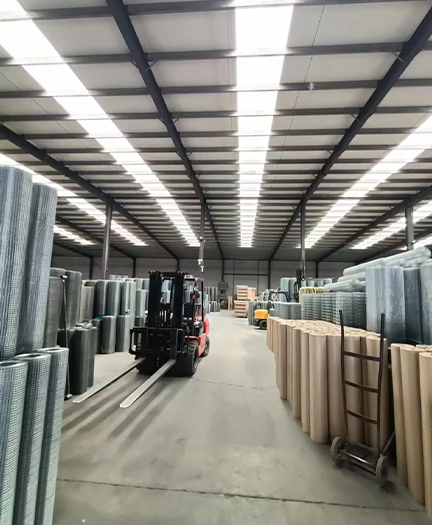-
 Afrikaans
Afrikaans -
 Albanian
Albanian -
 Amharic
Amharic -
 Arabic
Arabic -
 Armenian
Armenian -
 Azerbaijani
Azerbaijani -
 Basque
Basque -
 Belarusian
Belarusian -
 Bengali
Bengali -
 Bosnian
Bosnian -
 Bulgarian
Bulgarian -
 Catalan
Catalan -
 Cebuano
Cebuano -
 China
China -
 Corsican
Corsican -
 Croatian
Croatian -
 Czech
Czech -
 Danish
Danish -
 Dutch
Dutch -
 English
English -
 Esperanto
Esperanto -
 Estonian
Estonian -
 Finnish
Finnish -
 French
French -
 Frisian
Frisian -
 Galician
Galician -
 Georgian
Georgian -
 German
German -
 Greek
Greek -
 Gujarati
Gujarati -
 Haitian Creole
Haitian Creole -
 hausa
hausa -
 hawaiian
hawaiian -
 Hebrew
Hebrew -
 Hindi
Hindi -
 Miao
Miao -
 Hungarian
Hungarian -
 Icelandic
Icelandic -
 igbo
igbo -
 Indonesian
Indonesian -
 irish
irish -
 Italian
Italian -
 Japanese
Japanese -
 Javanese
Javanese -
 Kannada
Kannada -
 kazakh
kazakh -
 Khmer
Khmer -
 Rwandese
Rwandese -
 Korean
Korean -
 Kurdish
Kurdish -
 Kyrgyz
Kyrgyz -
 Lao
Lao -
 Latin
Latin -
 Latvian
Latvian -
 Lithuanian
Lithuanian -
 Luxembourgish
Luxembourgish -
 Macedonian
Macedonian -
 Malgashi
Malgashi -
 Malay
Malay -
 Malayalam
Malayalam -
 Maltese
Maltese -
 Maori
Maori -
 Marathi
Marathi -
 Mongolian
Mongolian -
 Myanmar
Myanmar -
 Nepali
Nepali -
 Norwegian
Norwegian -
 Norwegian
Norwegian -
 Occitan
Occitan -
 Pashto
Pashto -
 Persian
Persian -
 Polish
Polish -
 Portuguese
Portuguese -
 Punjabi
Punjabi -
 Romanian
Romanian -
 Russian
Russian -
 Samoan
Samoan -
 Scottish Gaelic
Scottish Gaelic -
 Serbian
Serbian -
 Sesotho
Sesotho -
 Shona
Shona -
 Sindhi
Sindhi -
 Sinhala
Sinhala -
 Slovak
Slovak -
 Slovenian
Slovenian -
 Somali
Somali -
 Spanish
Spanish -
 Sundanese
Sundanese -
 Swahili
Swahili -
 Swedish
Swedish -
 Tagalog
Tagalog -
 Tajik
Tajik -
 Tamil
Tamil -
 Tatar
Tatar -
 Telugu
Telugu -
 Thai
Thai -
 Turkish
Turkish -
 Turkmen
Turkmen -
 Ukrainian
Ukrainian -
 Urdu
Urdu -
 Uighur
Uighur -
 Uzbek
Uzbek -
 Vietnamese
Vietnamese -
 Welsh
Welsh -
 Bantu
Bantu -
 Yiddish
Yiddish -
 Yoruba
Yoruba -
 Zulu
Zulu
rolled steel mesh
Understanding Rolled Steel Mesh Versatility and Applications
Rolled steel mesh, a crucial component in various industrial and construction applications, combines strength, flexibility, and versatility. Made from high-quality steel wires, this mesh takes the form of sheets or rolls and is used extensively across multiple sectors.
What is Rolled Steel Mesh?
Rolled steel mesh consists of intersecting steel wires, which are typically welded or woven together to form a robust network. The mesh is available in various configurations, including different wire diameters, spacing, and coating options. These characteristics allow for customization according to specific requirements, making rolled steel mesh a preferred choice in numerous applications.
The Manufacturing Process
The production of rolled steel mesh involves several key steps. Initially, steel wires are drawn to the desired gauge and are then cleaned to remove impurities. The wires are subsequently cut and arranged in a grid pattern before being welded together at the intersections. Depending on the intended use, the mesh may undergo additional processes such as galvanization or coating to enhance corrosion resistance and durability.
Applications of Rolled Steel Mesh
1. Construction Industry One of the primary uses of rolled steel mesh is in the construction sector. It is often employed as reinforcement in concrete structures, such as slabs, walls, and pavements. The mesh enhances the structural integrity of the concrete, helping to control cracking and improve load distribution.
2. Road and Bridge Construction In civil engineering, rolled steel mesh is utilized in the construction of roads and bridges. It provides additional tensile strength, which is critical in ensuring the longevity and stability of these infrastructures, particularly under heavy traffic conditions.
rolled steel mesh

3. Temporary Fencing Rolled steel mesh serves as an effective solution for temporary fencing needs at construction sites, public events, or for security purposes. Its durability and ease of installation make it suitable for creating barriers that can withstand harsh environmental conditions.
4. Industrial Applications Within the manufacturing sector, rolled steel mesh is used in the production of filters, screens, and trays. Its ability to withstand high temperatures and corrosive environments makes it an essential material in various industrial processes.
5. Agriculture In agriculture, rolled steel mesh is employed for fencing livestock and creating enclosures for crops. The strength and resilience of the mesh help to protect valuable resources from wildlife and ensure the safety of farm animals.
Advantages of Rolled Steel Mesh
The popularity of rolled steel mesh can be attributed to its numerous advantages. Firstly, its high tensile strength allows it to support substantial loads, making it ideal for structural applications. Secondly, its lightweight nature facilitates easy transportation and installation, reducing labor costs. Additionally, rolled steel mesh is often available at a competitive price point, making it an economical choice for both small-scale and large-scale projects.
Moreover, the adaptability of rolled steel mesh means it can be tailored for specific applications, whether that involves altering the dimensions, wire gauge, or surface treatment. This versatility is crucial in addressing diverse needs across different industries.
Conclusion
Rolled steel mesh is an indispensable material in modern construction and various industrial applications. Its strength, flexibility, and adaptability make it a preferred choice for engineers, architects, and manufacturers alike. As industries continue to evolve, the role of rolled steel mesh will undoubtedly expand, contributing to innovative solutions and advancements in construction and manufacturing practices. Whether for reinforcing structures or serving as temporary barriers, rolled steel mesh remains a cornerstone of modern infrastructure development.
-
Shipping Plastic Bags for Every NeedNewsJul.24,2025
-
Safety Netting: Your Shield in ConstructionNewsJul.24,2025
-
Plastic Mesh Netting for Everyday UseNewsJul.24,2025
-
Nylon Netting for Every UseNewsJul.24,2025
-
Mesh Breeder Box for Fish TanksNewsJul.24,2025
-
Expanded Steel Mesh Offers Durable VersatilityNewsJul.24,2025











